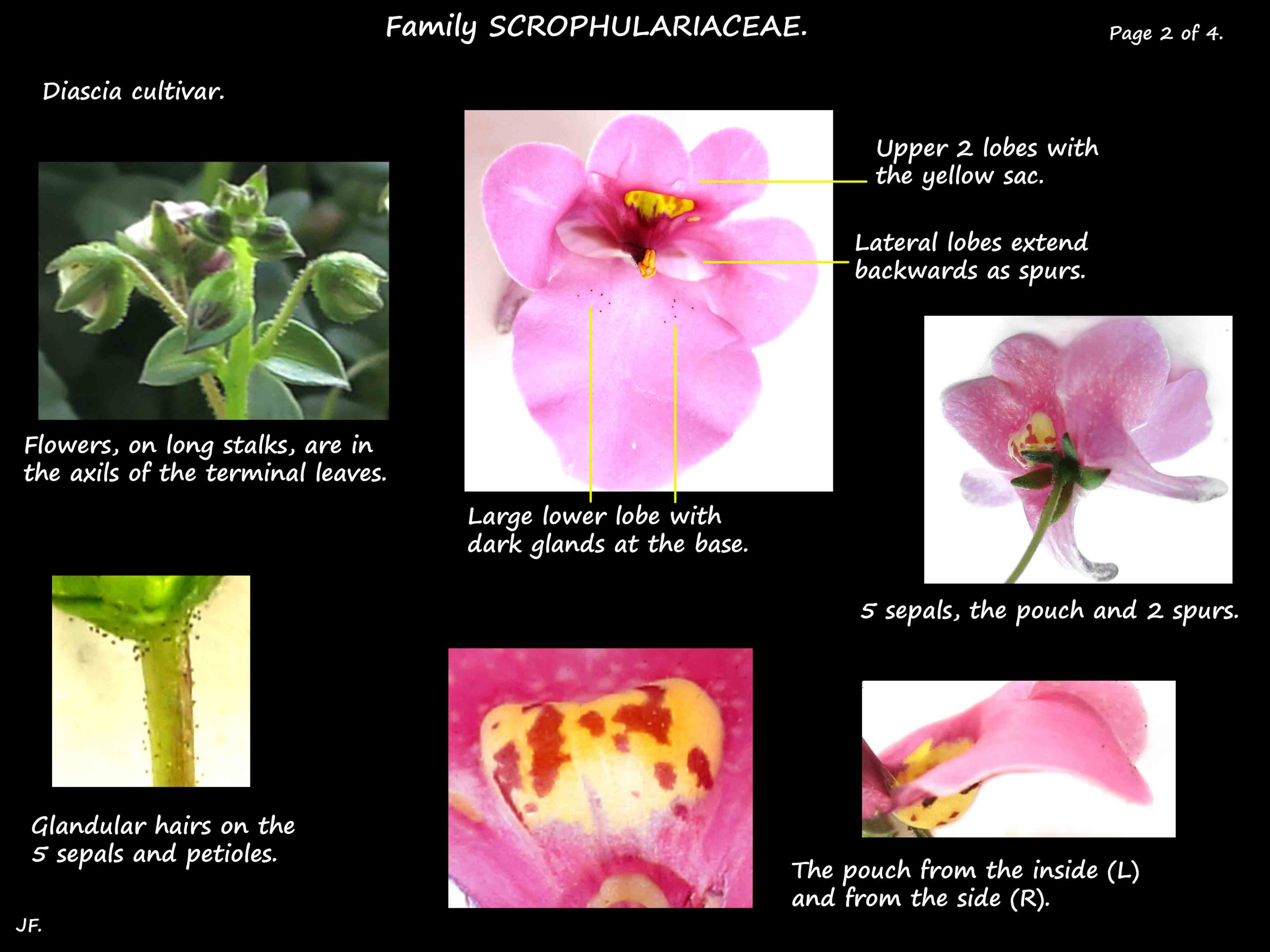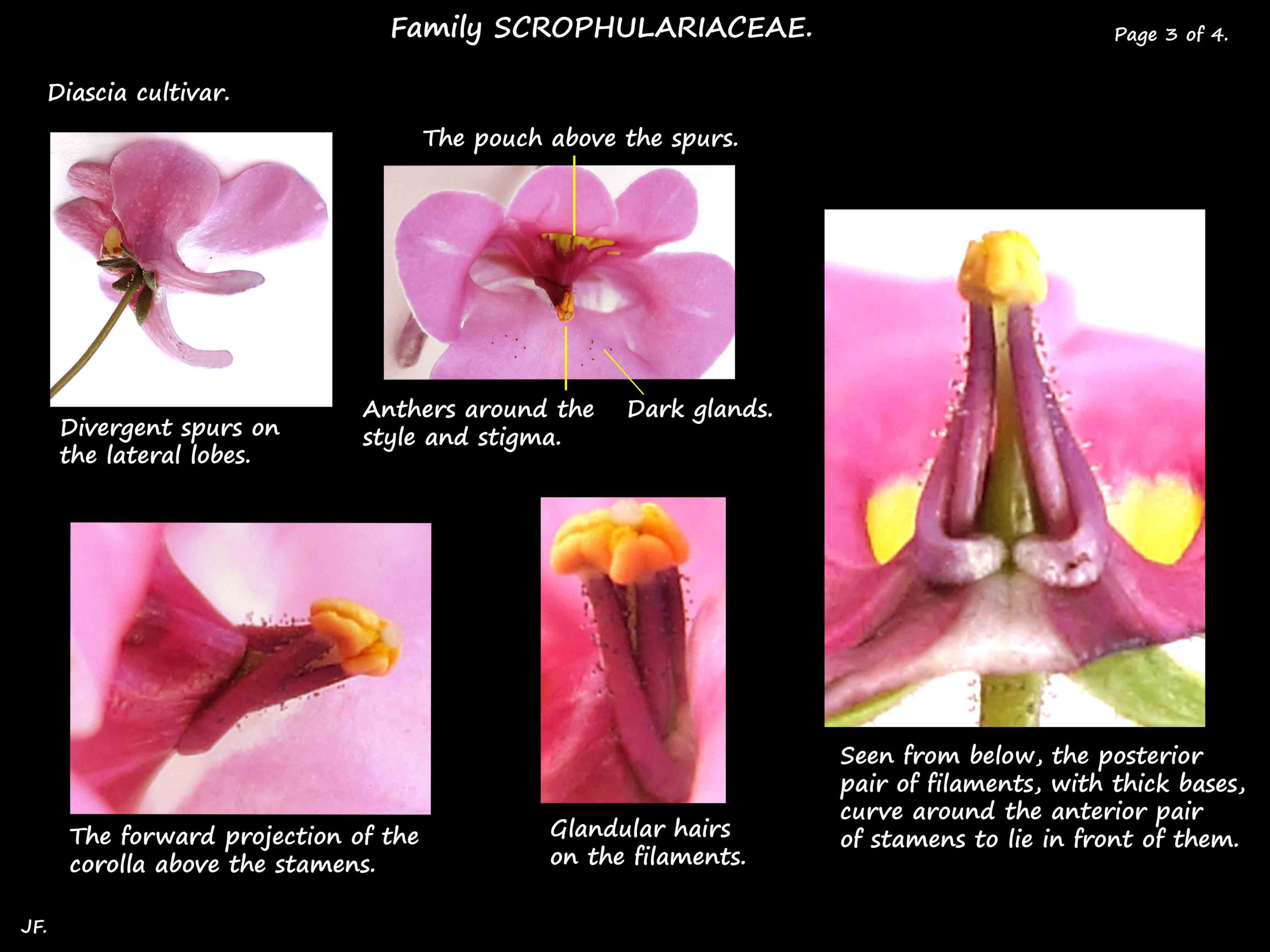Diascia – Twinspur.
Family Scrophulariaceae.
There are around 70 species commonly known as Twinspurs.
Species plants hybridise readily and the garden plants are mostly cultivars.
Some are compact mounding plants 30 to 40 cm high with many branching stems.
Others have trailing or scrambling stems up to 1 m long.
The fleshy stems are square in cross section with oppositely arranged leaves on petioles.
The blades are lanceolate, heart-shaped or oval and can be wide or narrow.
The edge can be smooth or have some large teeth.
There may be a few hairs but they are usually smooth.
Inflorescences, with1 to 3 flowers on long stalks, are in the axils of the terminal leaves.
The stalks and the 5 sepals, have some hairs.
Species flowers are commonly pink but cultivars add many shades of reds and pinks plus white,
orange and blue.
The bases of the 5 petals are fused with 1 large, wide lower lobe and 4 smaller upper lobes.
On the base of the lower lobe are patches of dark oil producing glands that attract pollinators.
At the base of the upper 2 lobes are 1 or 2 bright yellow pouchs (windows).
They are 1 to 2 mm deep and have deep purple markings.
Below the pouches, at the base of the lateral lobes, are nectary spurs.
The 2 spurs are 3 to 5 mms long and diverge from each other.
The 4 stamens, inserted into the corolla tube, have glandular hairs on the filaments.
Immediately above the insertion the corolla is tented inwards.
The posterior pair of filaments curve around the anteriot pair and come to lie in front of them.
The superior ovary has 2 locules.
The stigma is surrounded by, and just above the anthers.
The fruit are capsules about 1 cm long with curved, winged seeds.
The flowers are adapted to be pollinated by a species of South African bees.
This means that cultivars do not produce seed.
J.F.





